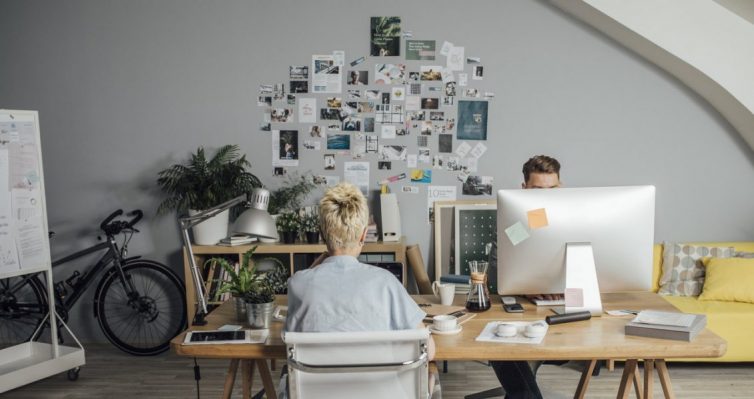Since the mid-20th Century, there has been a pretty clear idea of what an office should look like in the public imagination: grey cubicles, practical carpeting, and beige walls, with muted sofas in the break room.
It is quite apparent that this is not an inspiring vision, so how can it be improved?
In recent years, the nature of work in many workplaces has changed with the invention of the open-plan office, which offers a more spacious working experience. However, the rise in availability and practicality of employees working from home raises a new question: what is the best design for offices in the age of the remote worker?
What does remote working mean for your business?
Until recently, very few jobs could be done just as efficiently, while working remotely. It was not possible to provide the oversight needed to be sure tasks were being completed on time, until fairly recent online developments allowed this to become more practical. The biggest recent change in this is the creation of work platforms for teams such as Slack, which allow instant secure communication and transmission of documents between co-workers.
Allowing teams to work closely like this without needing to be in the same space can pay valuable dividends. Combined with the ability to have regular Skype calls, management can check in just as well with workers who are working remotely, as with those in the office on a given day.
Recent years have seen a large increase in the number of employees who mostly work in the office, but spend one or more days a week as remote workers. This flexible model can be an excellent way of tackling the downsides of both the full office week and full-time home working. Flexible employees who have a shorter work week and a chance to work from home show higher productivity, while avoiding the isolation and claustrophobia that can affect some people who work as full-time home workers.
What is the best way to redesign your office accordingly for remote worker flexibility?
With remote work showing evidence of increasing employee productivity and happiness, and also providing an excellent chance to lower your business’ carbon footprint, the question is how best to design for this growing part of corporate life. One practical solution is to consider hotdesking parts of your office. If you have employees you know are not looking to work remotely, then see if it is possible to keep them at their own designated desks, but create a rota of hot desks for remote workers on the days they are in.
If you want to think bigger, it can be worth looking for a team of workplace design experts from a design firm to look at how you use your space and divide it up in the most innovative way possible. When a lot of your employees work from home it is possible to reconsider how the space should be divided up, and where it is possible to put in extra office features and utilities in the space no longer needed for desks.
